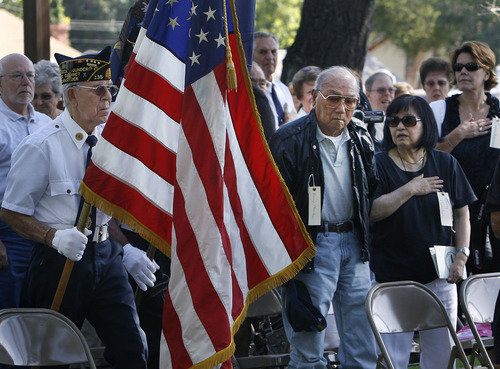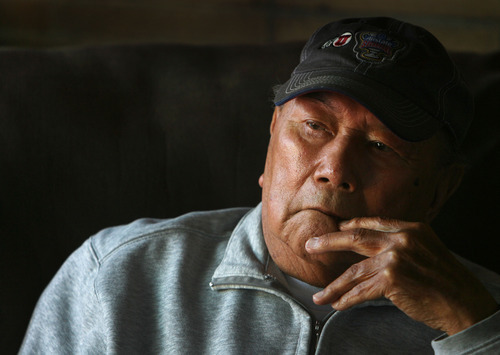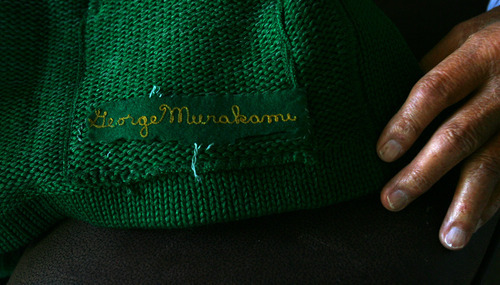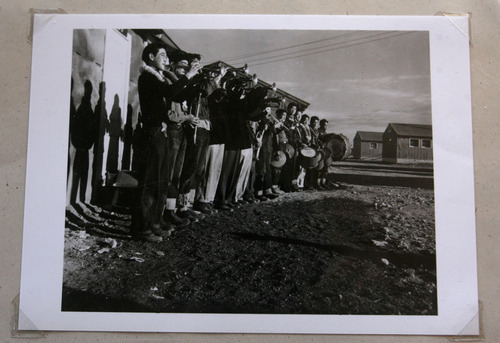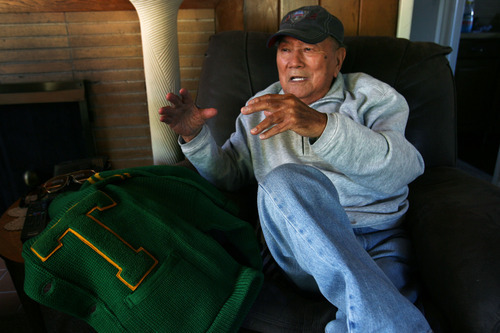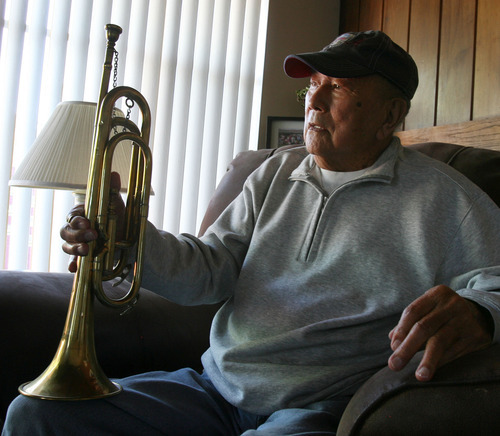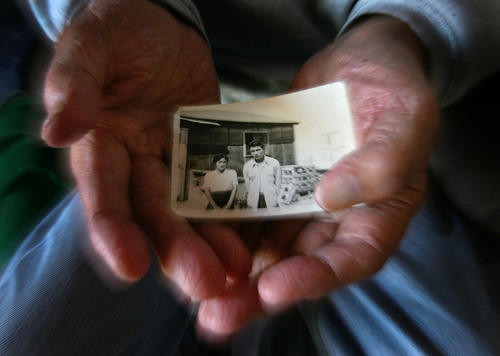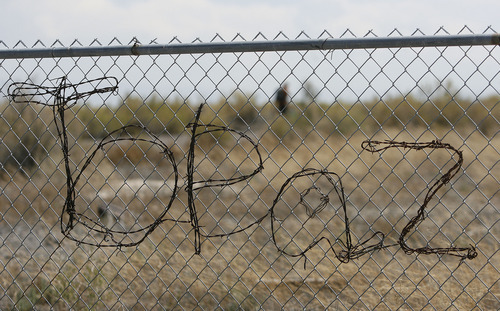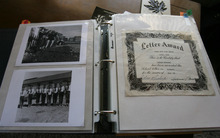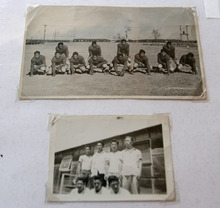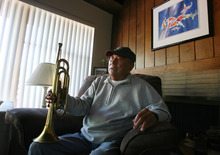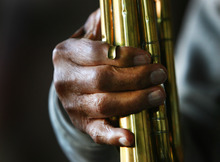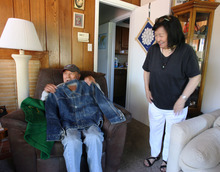This is an archived article that was published on sltrib.com in 2012, and information in the article may be outdated. It is provided only for personal research purposes and may not be reprinted.
The work was tedious and the pay was paltry, but picking fruit in Utah County gave the Japanese-American men incarcerated at Topaz during World War II a taste of freedom.
For George Murakami, it lasted only as long as it took for racism's ugly face to show up.
"We got shot at in the tent city," recalls Murakami, 85, who spent his high school years at the Topaz Internment Camp in west-central Utah. "I thought, 'For the amount of money I'm making, I'm getting the hell out of here.' "
Murakami returned to the safety of Topaz, where he graduated from the camp high school in 1944 — and promptly caught a train bound for a job at the University of Michigan.
His story illustrates a little-known piece of the history of Topaz, the desolate desert camp where the U.S. government forced thousands of Japanese-Americans from the West Coast to live during World War II.
It opened on Sept. 11, 1942, 70 years ago this week.
While Topaz and nine other inland internment camps were surrounded by tall barbed-wire fences and guarded by armed soldiers, the borders of most were porous.
Teenagers like Murakami played football against rival teams in neighboring towns; residents could get passes and ride a bus to shop in Delta, the nearest city, 16 miles away; 451 young people left for the Army and hundreds for colleges everywhere but along the West Coast. And, importantly, many got temporary leaves to fill the gaps in the labor force left by soldiers and others who migrated to work in coastal defense factories. Most had jobs on farms, but some were domestic workers in homes or had shifts in factories and restaurants.
"Many Americans assume … they spent the entire duration of the war surrounded by barbed wire," says Christian Heimburger, a visiting Brigham Young University scholar who is writing his dissertation on the internees who worked outside of camp.
In fact, Heimburger's research suggests that at least 10 percent of internees left for temporary work, and they played a big role in the later diaspora of Japanese-Americans throughout the country — a goal of the War Relocation Authority.
"Without this pioneer group who were willing to risk ... violence and bad working conditions," Heimburger says, "you wouldn't have as many people willing to permanently relocate."
Murakami's own father was one of those pioneers.
He had owned a dry goods store in Berkeley, Calif., but was recruited to be a chef for the old Pilot Café in Salt Lake City. He left his family in camp while he got started on their new life in Salt Lake City.
—
Coming to Utah • Japanese immigrants first came to Utah shortly after their home country began allowing them to emigrate in 1885.
The earliest Japanese residents were mostly railroad workers, farmers and miners; shopkeepers and restaurateurs followed, building ethnic enclaves known as Japantowns in downtown Salt Lake City and Ogden.
It's unclear how many Topaz internees stayed on in Utah, joining the existing Japanese American community, although the census numbers more than doubled to 4,452 between 1940 and 1950.
Topaz closed Oct. 31, 1945, but residents who didn't intend to go back to California had been leaving long before that.
Not all of the newcomers to Utah's communities came from Topaz, says Haruko Moriyasu, the recently retired director for the University of Utah's Asia Center.
A native of Salt Lake City, she was 10 when World War II began. Her family founded the long-running Utah Nippo newspaper.
Moriyasu says Utah's Japanese-American population likely swelled by several thousand as West Coast residents heeded government prodding to move inland in the months after Japan struck at Pearl Harbor on Dec. 7, 1941.
The number of Japanese businesses in Salt Lake City's Japantown "ballooned in that time," she says. "People were living in all kinds of places."
In Wasatch County, a Japanese-American named Fred Isamu Wada leased 3,500 acres, where about 130 former Californians moved to raise vegetables during the war. The farm they leased was at Keetley, now under water below Jordanelle Reservoir.
—
'Keep out' • In March 1942, the government slammed the door on voluntary evacuation from the West Coast, in part because Utah and Colorado were rejecting the migrants.
Anti-Japanese sentiment in Utah, and elsewhere in the country, had been growing steadily since the 1920s, but became acute during the war.
"All over Provo there were signs: 'Dogs and Japs keep out,' " Murakami recalls.
The Utah Legislature considered sending the state's Japanese into camps but instead barred them from buying land.
Utah State University's president wouldn't allow second-generation Japanese Americans to enroll, some unions wouldn't admit Japanese workers and business and fishing licenses were denied. Their cemeteries were vandalized.
Moriyasu believes that most of the voluntary evacuees returned to the coast after the war, although some stayed.
Utah also gained residents from other internment camps.
Raymond Uno, a retired 3rd District judge, was born in Ogden, but his family had moved to California in 1938 and was caught in the internment net. He was 11 when he arrived at Heart Mountain Camp in Wyoming.
His father died there, and his mother returned with her three children to Ogden, where she had family.
He lived near Ogden's 25th Street, which had a reputation as one of the nation's wildest streets because sailors and soldiers passed through on their way to and from the Pacific theater of war.
"Some were not too good. We were called Japs and this and that," Uno recalls. "As a general rule, we were part of the population of 25th Street."
—
Postwar problems • Discrimination eased a bit in the postwar years, yet anti-Japanese sentiment remained among many, Uno says.
City folk were generally less hostile, although farmers in rural areas had begged for the Japanese workers during the war — something Heimburger calls "open arms and closed minds."
After working in Michigan and a stint in the Army, Murakami married a Salt Lake City nurse, Betty Kurokawa, and eventually became head produce buyer for Associated Foods.
In 1953, though, the young couple were forced to give up their first home in west Salt Lake City by neighbors who petitioned to void the sales contract. They were able to buy a home in Rose Park only through the intervention of two friendly Caucasian neighbors.
The couple reared their four children there and now have 13 grandchildren and 15 great-grandchildren.
—
Beyond Topaz • Through the decades, the Japanese-American community has grown only a little.
Many third- and fourth-generation Japanese married Caucasians and many converted to The Church of Jesus Christ of Latter-day Saints.
Uno says the destruction of Japantown to make way for the Salt Palace in the late 1960s served the same function as internment: It scattered people throughout Utah just as internment broke up Japanese communities on the coast.
The only two buildings left in Japantown — the Salt Lake Buddhist Temple and the Japanese Church of Christ — remain home to vibrant and growing communities, however. The churches host regular festivals that showcase Japanese culture.
Every time city and business leaders talk of expanding the Salt Palace farther west, and perhaps displacing the churches, community leaders push back.
They persuaded the city to name their lone remaining block of 100 South — between 200 West and 300 West — Japantown Street in 2007. The Salt Palace's last expansion included a Japanese garden, blue Japanese tile on the wall tops and a kimono motif on the gates.
There is even a long-dormant plan for redeveloping Japantown. It awaits a developer and money.
"It would be a shame for it to disappear," says Moriyasu.
Remembering Topaz is important, she says, "because it tells you something of an attitude of a country toward a group of people."
"But it's important for people to understand there were 50 years of history of Japanese in Utah before Topaz ever happened and 60 years after Topaz."
Learn more about Topaz
O Rare color movie footage from inside the camp is at sltrib.com.
A video by a Brigham Young University student about George Murakami, nominated for a regional Emmy, is at http://www.youtube.com/watch?v=6uenn0O7jHs.
These websites have collections of photos and other information about Topaz:
The University of Utah Special Collections website on Topaz is under construction. Email lorraine.crouse@utah.edu for information. —
Museum project
A volunteer board trying to preserve the history of the Topaz Internment Camp is building a $2.3 million museum on Main Street in Delta, the nearest city.
The National Park Service announced a $714,000 grant for the museum last spring, and the board is raising the rest through donations and foundation grants.
Construction is set to begin this fall, and the museum is expected to be finished in the fall of 2013.
The former camp itself, 16 miles northwest of Delta and 140 miles from Salt Lake City, was designated a National Historic Landmark in 2007. Since 1993, the volunteer board has purchased most of the 640 acres of the former camp.
The architect for the project is Alan Kawasaki of Oakland, Calif., whose mother, older sister, aunts and uncles were all in Topaz. "It means a lot to me," Kawasaki said at the Aug. 4 groundbreaking.
Those interested in making a donation can send a check to the Topaz Museum, P.O. Box 241, Delta, UT 84624. The website is http://www.topazmuseum.org. —
By the numbers
» 112,000 of 127,000 Japanese Americans (those living on West Coast) were sent to 10 inland internment camps.
» Topaz Internment Camp opened Sept. 11, 1942, and closed Oct. 31, 1945.
» More than 11,212 Japanese Americans were admitted to Topaz over three years; the peak population was 8,316.
» 451 camp residents left to serve in the U.S. Army; 15 were killed in action.
» 450 babies were born in camp; 131 people, mostly elderly, died.
» Utah's population of Japanese dropped by 32 percent, to 2,210, between 1930 and 1940 as anti-Japanese sentiment increased. By 1950, it had doubled to 4,452.
Sources: Jewel of the Desert by Sandra Taylor, Topaz Baby Project of Topaz Museum, "Utah Minorities: The Story Told by 150 Years of Census Data," University of Utah.


